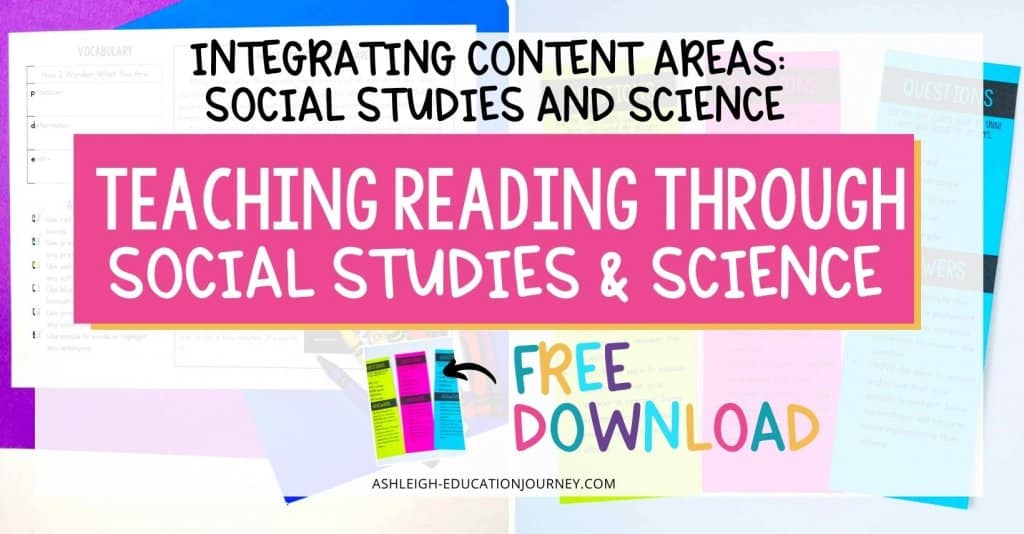
Integrating science and social studies with reading is a must. We all know that time is always a problem for teachers. There are simply not enough hours in the day to teach all that we’re expected to teach. It’s just not possible. Due to testing and/or district and state requirements, social studies and science often take the back seat. That’s unfortunate on so many levels. Those subjects are essential for students’ schema for reading comprehension and can lead to powerful learning opportunities.
While I can’t say that I get it in every day, I do carve out time for intentional science and/or social studies instruction. You can read more about that here. I also try integrating science and social studies into my reading and writing instruction, or maybe I should say I integrate reading and writing into my science and social studies instruction.
Below are some of my favorite resources for effectively integrating science and social studies.
In this post:
- Interactive Notebooks for Social Studies and Science
- Social Studies and Science Paired Passages
- Fluency Passages
- Epic Science
- Bookmarks
Interactive Notebook for Social Studies
Interactive notebooks are an amazing for integrating science and social studies with reading. Through interactive notebooks, students can apply what they’ve learned in reading. This is a little more challenging than answering explicit questions or right there questions, because students will need to read and locate answers from a variety of places within a text. This helps students to take their reading comprehension to the next level.
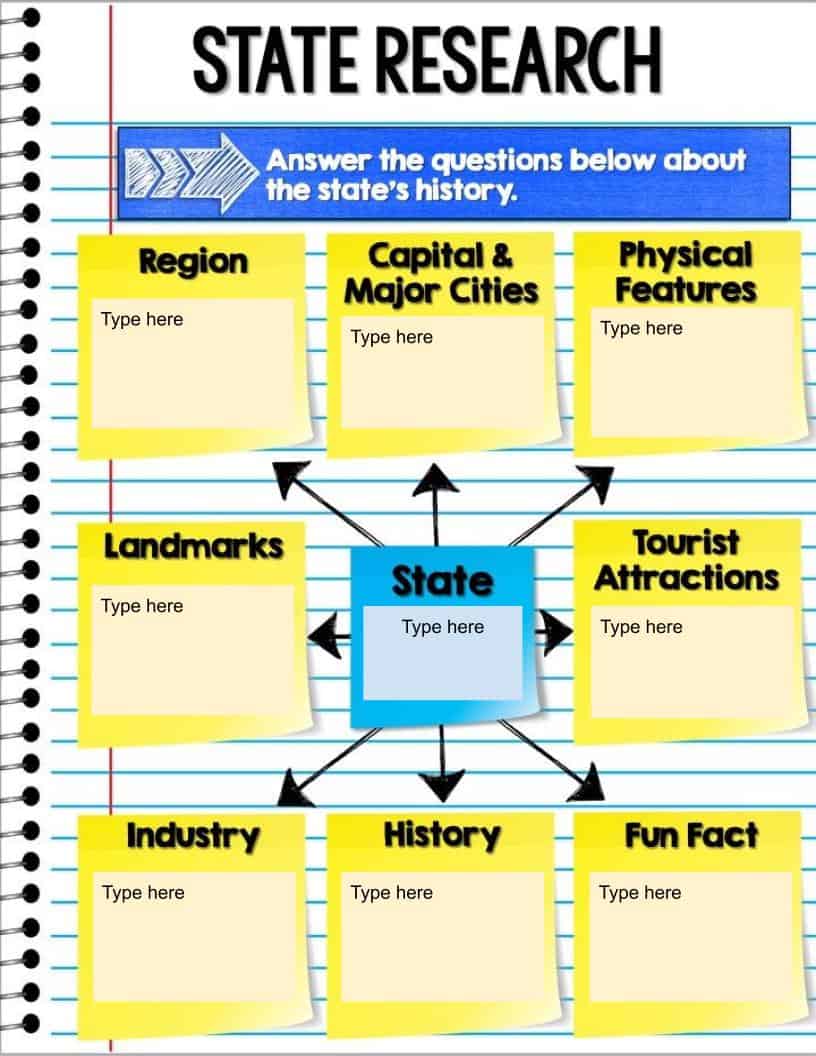
I always liked using my Social Studies Interactive Notebook, but I didn’t particularly enjoy using up class time for cutting and pasting. However, when I shifted to a digital notebook, that changed everything! It’s so much faster to prepare and for students to complete, so you have more class time. One of the best parts to using the digital version of the interactive notebooks, is that you can link informational texts to each individual page. You can get a free version of the state research page here.
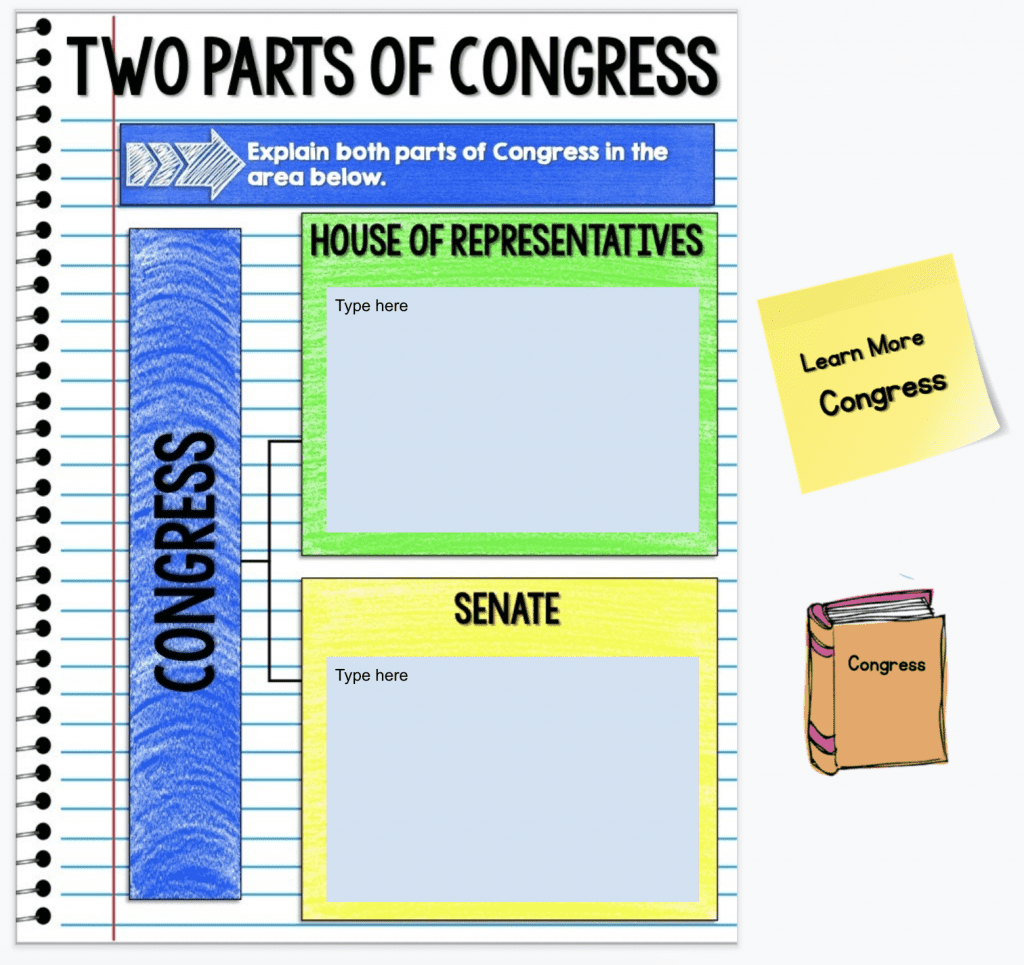
Students click on the icons to be taken to assigned books on GetEpic. If you don’t already use Epic, please check it out! If you want to assign different books or different video clips, that’s totally editable. Just type in what you’re looking for, and there’s almost always a huge selection to choose from. It’s one of the best ways for integrating science and social studies!
Social Studies and Science Paired Passages
Once students have a solid grasp on informational reading standards, paired passages are great for integrating science and social studies. You can teach students to respond to an informational text, compare and contrast technical writing, and integrate information.
One great resource for integrating science and social studies this are these Science Paired Passages and Social Studies Paired Passages. Students read two passages based on the same topic. For example, one passage may be on stars, while the other passage is about the Moon. Students circle prefixes, suffixes, homophones, synonyms, or antonyms and use context clues to determine the meaning of unknown words. Then, students answer three text dependent, multiple choice questions for both passages.
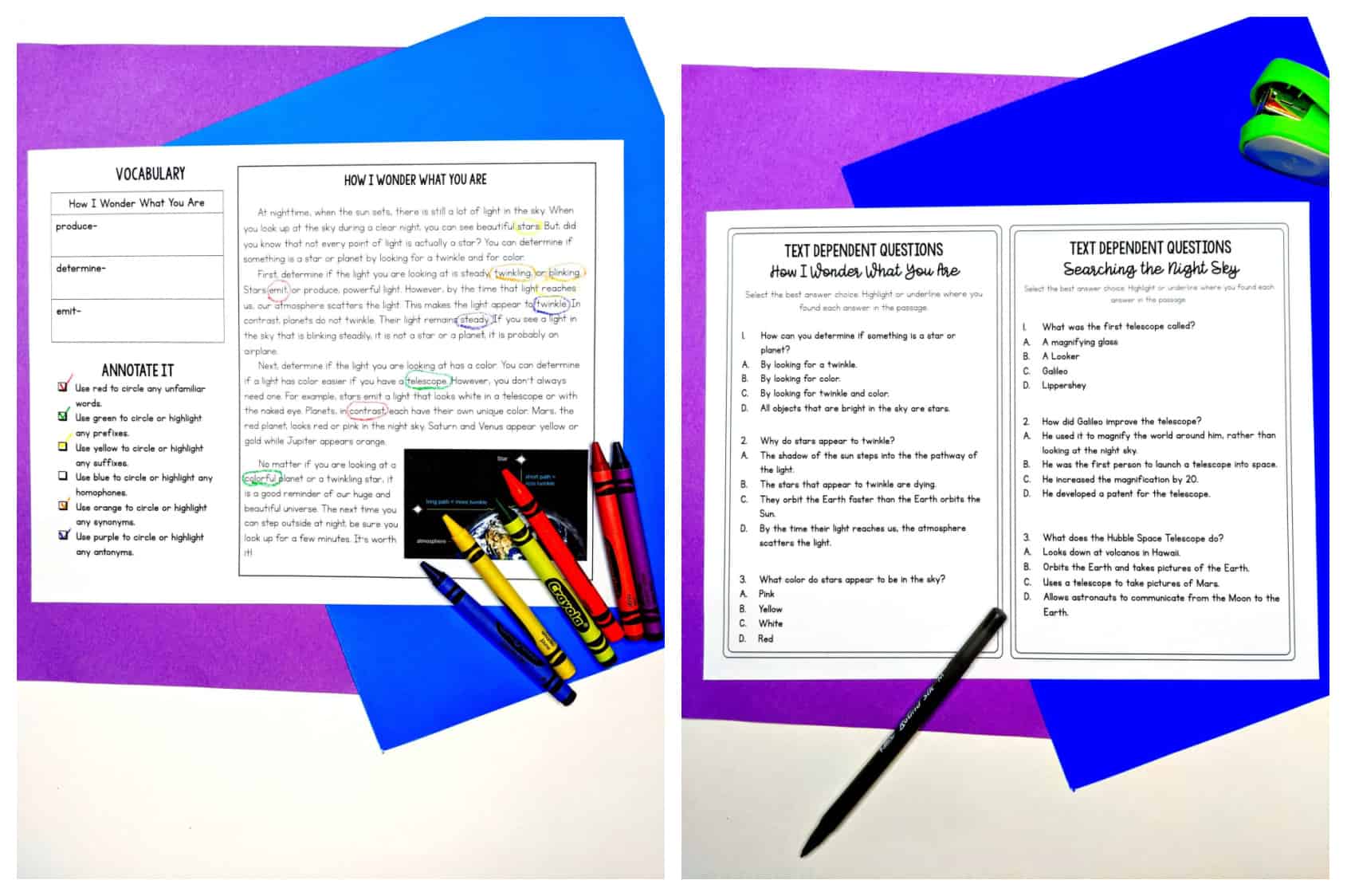
Students then answer questions about the text structure and nonfiction text features for each passage. The following questions have students identify the main idea from a paragraph in each passage. You can see below how this can also be completed digitally. Students can type directly on the Google Slides.
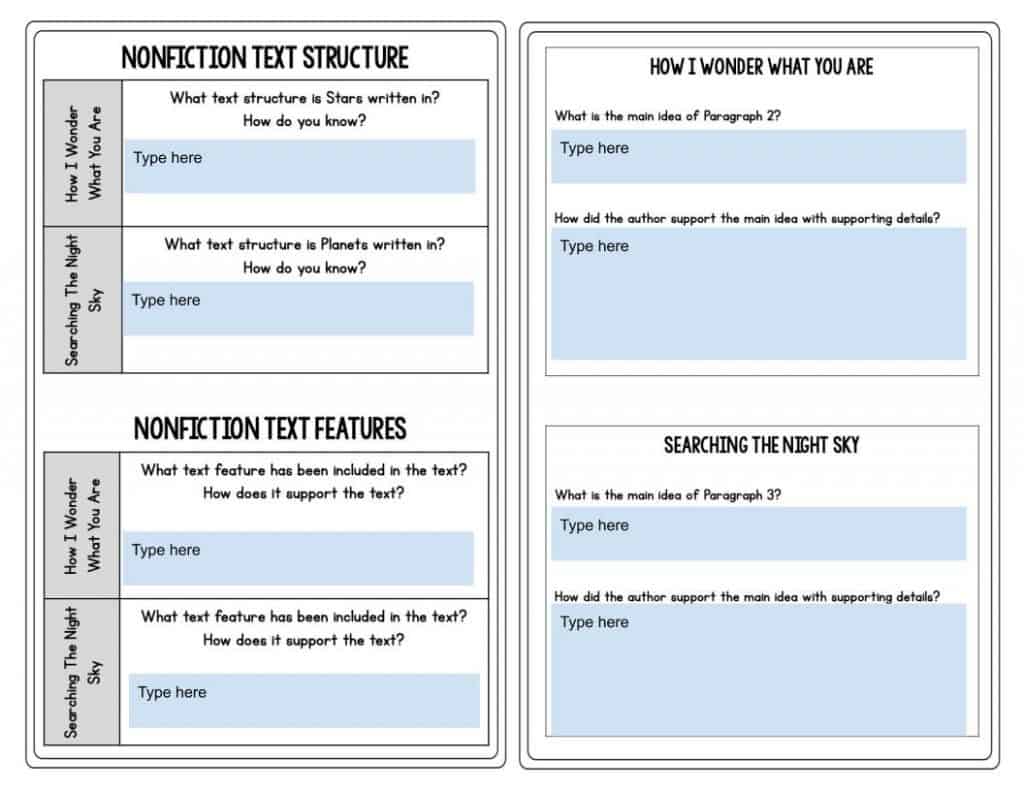
Finally, students answer two extended response questions. The types of questions require students to integrate text from both passages, which is always a challenging skill for students.
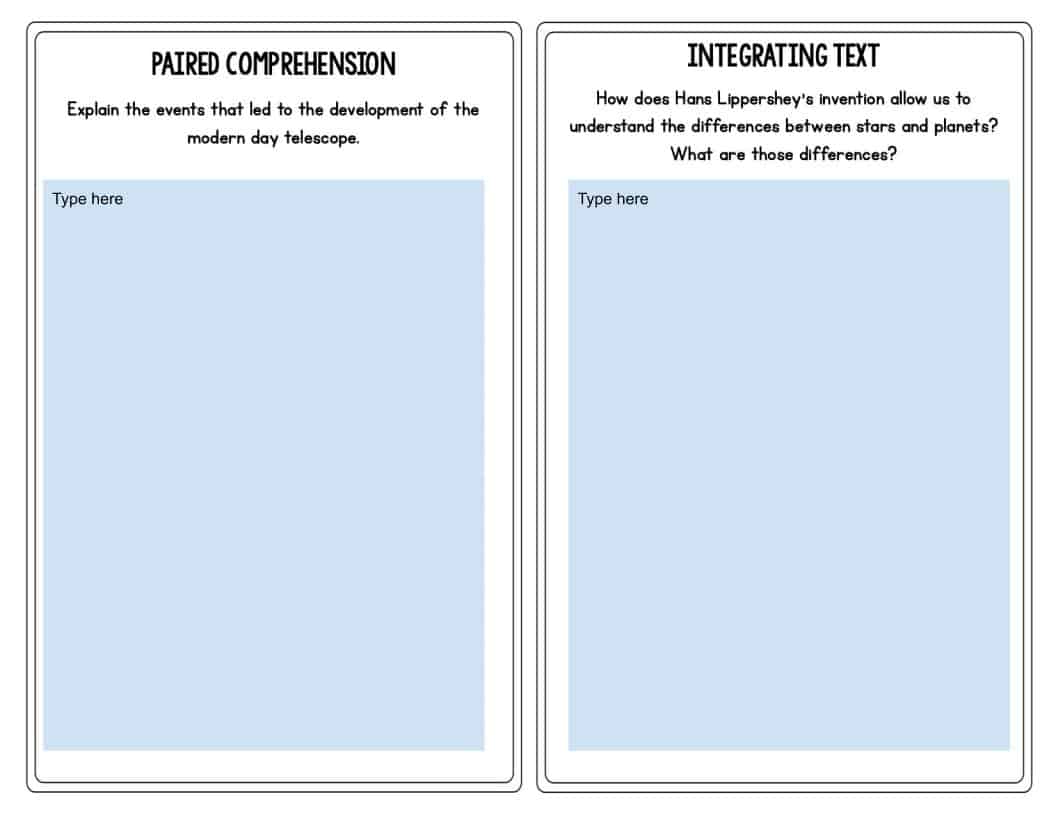
These paired passages review all of the informational reading standards, so I don’t try to use these early in the school year. I also would not recommend trying to complete an entire set in just one class period, as that would be a bit overwhelming. Students typically experience better success when assignments like this are broken into smaller pieces.
Integrating Science and Social Studies With Reading-Fluency Passages
My favorite resources for fluency practice are these fluency passages which are perfect for integrating science and social studies topics. The fluency passages have made a tremendous impact on my students’ reading fluency, and I love the fact that my students are also reading information that we are studying in social studies and science.
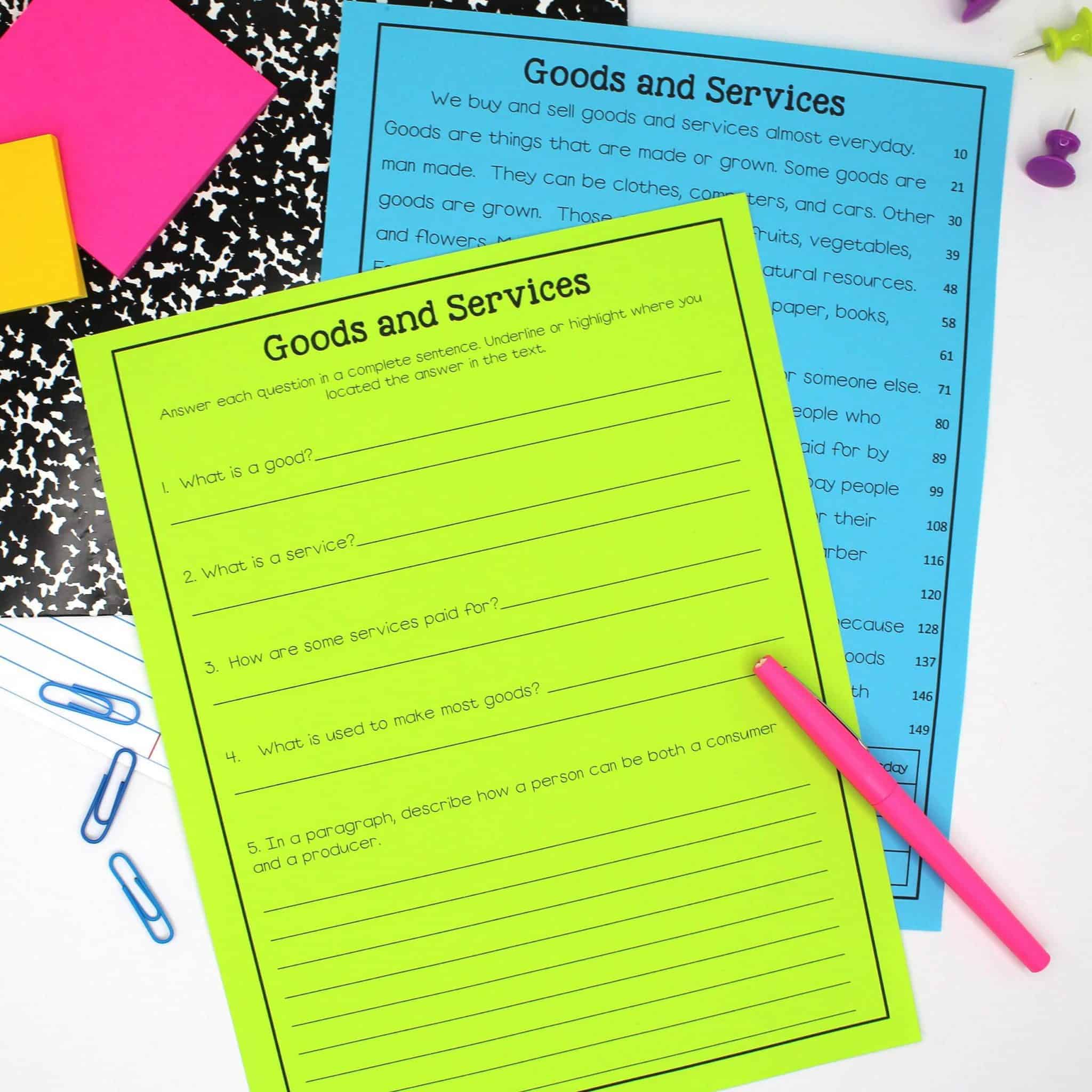
I only assign fluency passages to students who need to work on fluency, because I don’t want to overly encourage excessive speed reading. Students do not benefit when they blaze through a passage and have no idea what they read. I check students’ cold read of the passage on Monday morning, and then they are to read the passage out loud to an adult three times a day Monday through Thursday and record the number of words read per minute. Students reassess on Friday, and they are always so amazed by their progress.
Epic Reading Passages
I want to give students the opportunity to work with “real” books. Since it’s not financially realistic to provide physical copies of large quantities of books to all students, I use Epic to get high quality books in my students’ hands. I recently completed a series of science comprehension questions to correlate with my favorite Epic books. The Epic Science resource has quickly turned into a classroom must-have!
This resource is geared toward upper elementary students, and I kept the passages in the range of 3rd, 4th, and 5th grade levels. Since that is a large range of reading levels, I built in in some scaffolding on the more challenging texts. I also prioritized content over reading level, because some of the levels are quite misleading. Some of the “easier” texts were much more challenging than texts with a higher level. Also, some of the “easier” texts had more thorough content than the higher-level texts. This exposure to a range of levels will benefit all students.
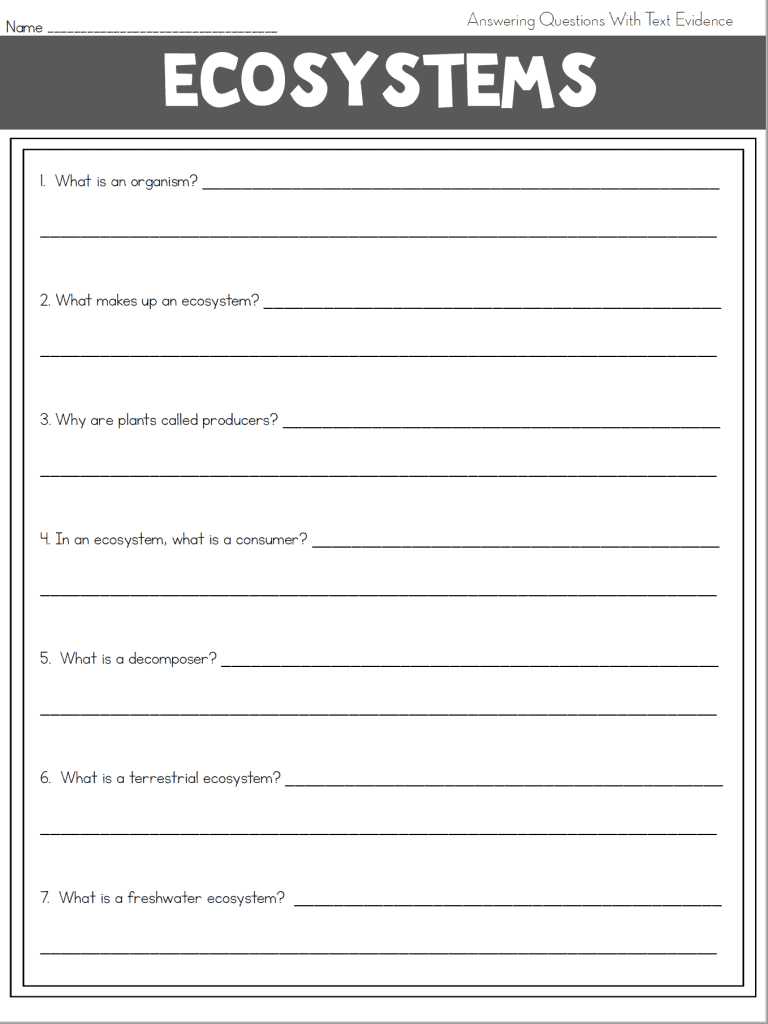
You can see how fun and bright the illustrations are, as well as how multi nonfiction text features are included. There are just so many opportunities on how to use this! This definitely simplifies integrating science and social studies!
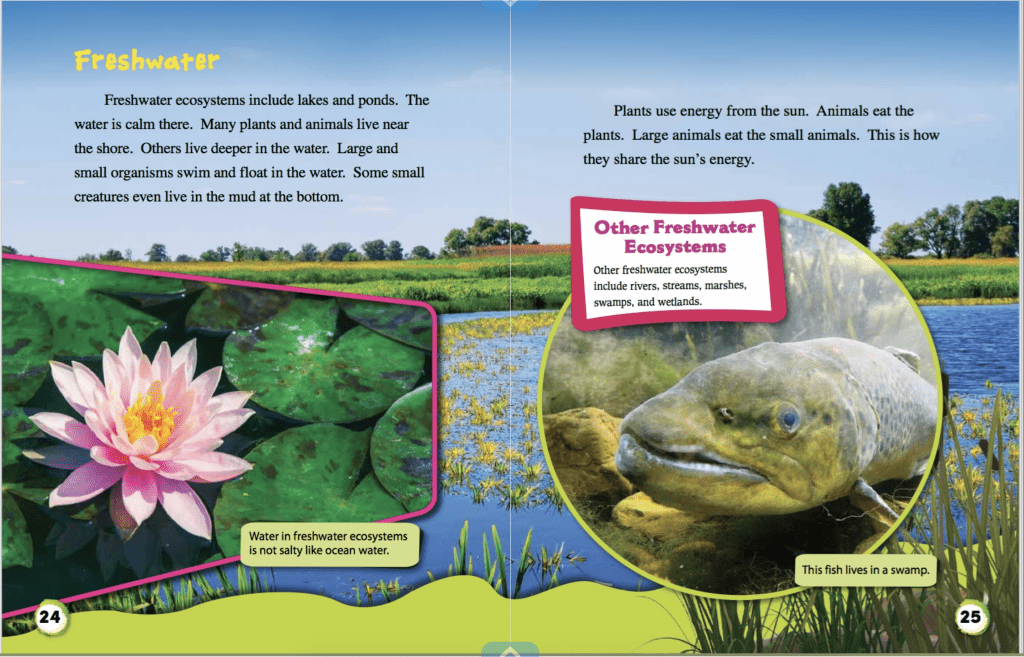
Integrating Science & Social Studies Bookmarks
I like to have students highlight where they found their answers in the passages. They can highlight either digitally or with a highlighter. The only problem I’ve run into is with my magazines. Since I reuse those, I don’t want anything permanently highlighted. I JUST discovered erasable highlighters! I plan to test them out over the school year, and I’ll be sure to let you know if they work.
You can also give students bookmarks with a color-coding guide so students can color-code their answers. You can download that bookmark here. I find that the color coding helps keep students a little more focused on the task.
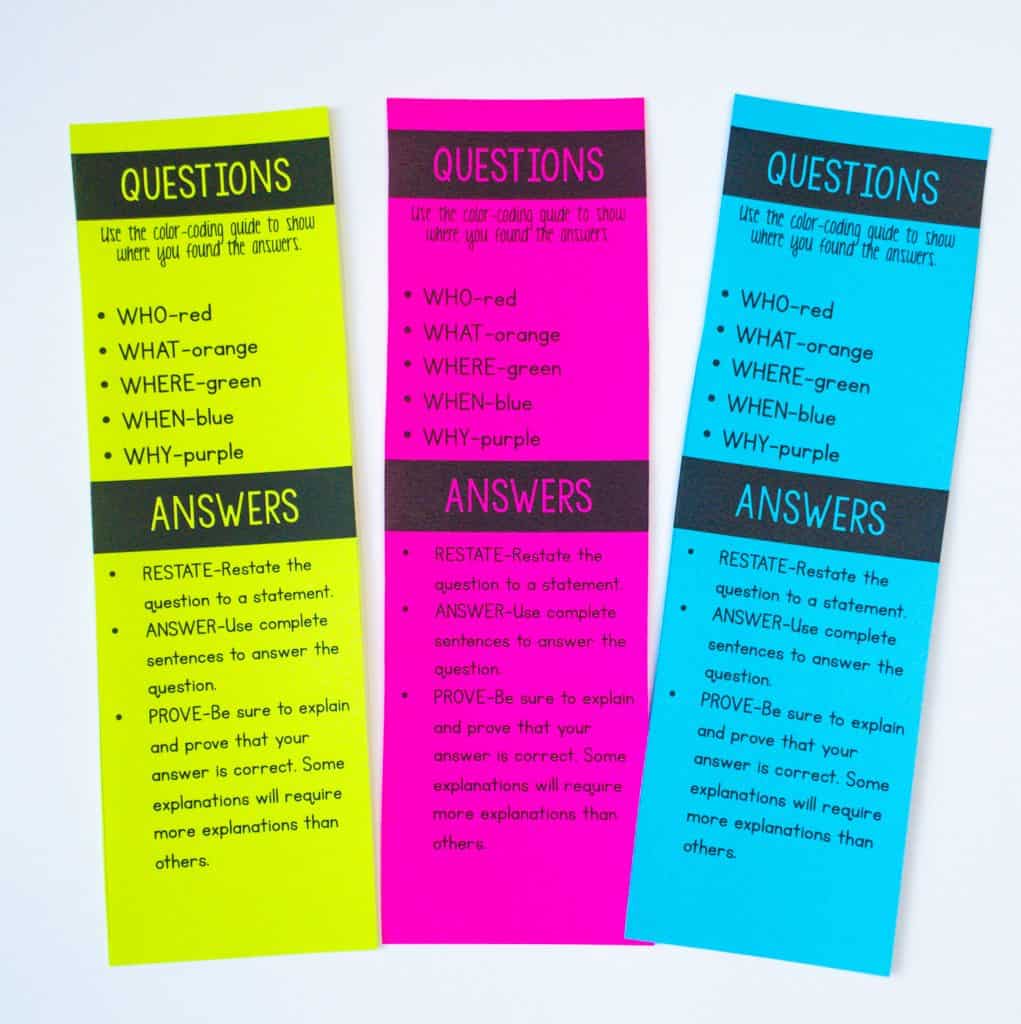
While I still make teaching social studies and science a priority, these strategies are so helpful when it comes to saving time and integrating science and social studies standards!

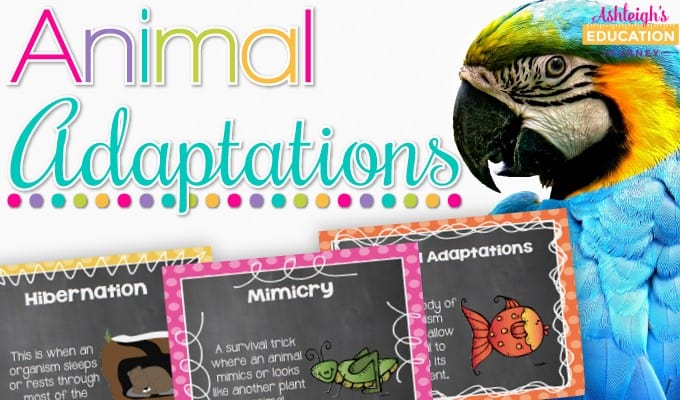
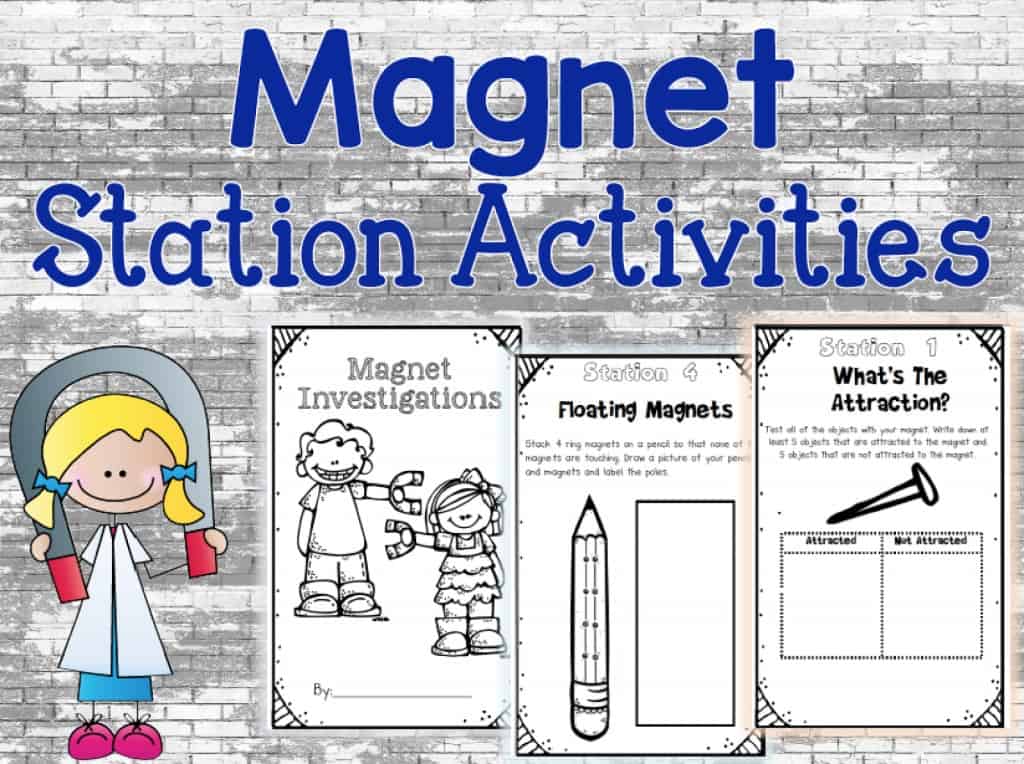
I just love your sharing. I am happy my idea of using reading skills in helping students understand science concepts better is as the same thought with your sharing. Thanks a lot fir the sharing.